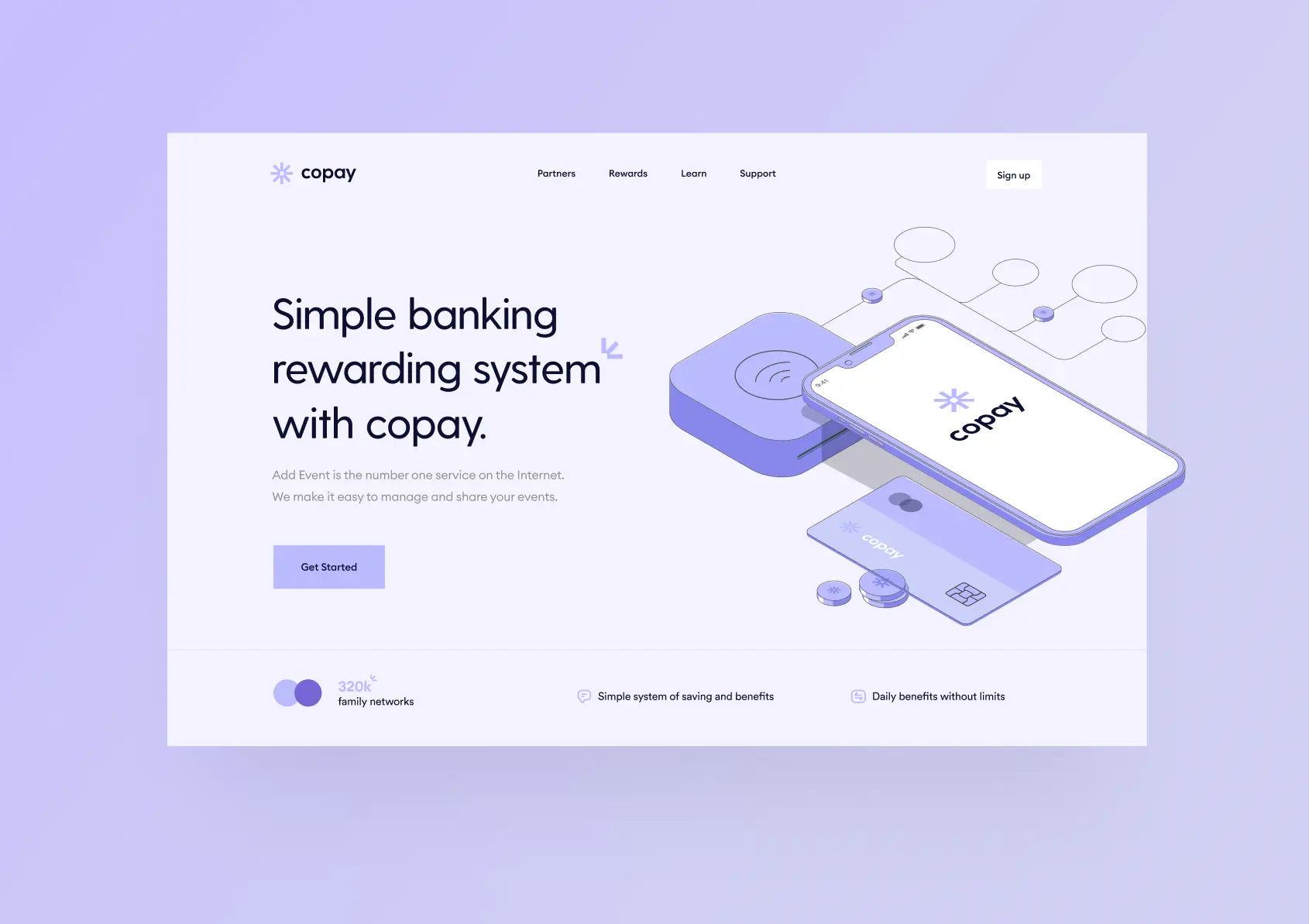Copay
Simple Banking Rewarding System
Simple Banking Rewarding System
Simple Banking Rewarding System
Unlock the future of seamless banking with Copay, where user experience meets unparalleled rewards. Our cutting-edge UX/UI digital project redefines the banking landscape, making every interaction effortless and every transaction rewarding.



Overview
I led design thinking and research initiatives across multiple ministries, driving the redesign of digital platforms for the Ministry of the Environment and Climate Change and the Ministry of Health and Long-term Care. By collaborating closely with product managers, developers, designers, and content strategists, I delivered user-centered solutions that significantly improved the effectiveness of these critical platforms.
Summary
As a Senior User Experience Designer, I spearheaded two major projects: redesigning the Environmental Registry website and enhancing the user experience for Ontario’s online application process for long-term care homes.
I played a key role in elevating design capabilities across government by authoring training materials and leading over 20 workshops on content strategy, design sprints, design thinking, and user research—reaching employees across 12 ministries.
To further strengthen design collaboration, I co-founded a Service Design Guild, which brought together 60+ designers through monthly meetups, and helped organize a government-wide Unconference, attended by over 500 employees.
Summary
Led and managed a remote team of five designers across Europe, successfully guiding five project teams through the development and beta launch of the Shopify Collective sales channel and app, surpassing initial KPIs by 50-130%.
Enhanced team communication and product strategy by taking product management classes, initiating weekly coaching sessions with senior UX managers, and collaborating with engineering and product leadership, leading to faster product iterations and improved team alignment.
Rebuilt team trust and strengthened connections by partnering with design leadership to restructure weekly design rituals, effectively addressing remote work challenges and fostering a more supportive and productive team environment.
Design team
Michelle Gerrard-Doyle, Staff Designer
Tom Collerton, Sr. Designer
Vince Hudson, Sr. Designer
Jolanta Cariova, Sr. Designer
Edgaras Predkelis, Sr. Designer
Benas Veselis, Designer
Jenny Hwang, Staff Researcher
Sophie Allcock, Sr. Content Designer
Timeline
2021-2024
Summary
Led and managed a remote team of five designers across Europe, successfully guiding five project teams through the development and beta launch of the Shopify Collective sales channel and app, surpassing initial KPIs by 50-130%.
Enhanced team communication and product strategy by taking product management classes, initiating weekly coaching sessions with senior UX managers, and collaborating with engineering and product leadership, leading to faster product iterations and improved team alignment.
Rebuilt team trust and strengthened connections by partnering with design leadership to restructure weekly design rituals, effectively addressing remote work challenges and fostering a more supportive and productive team environment.
Design team
Michelle Gerrard-Doyle, Staff Designer
Tom Collerton, Sr. Designer
Vince Hudson, Sr. Designer
Jolanta Cariova, Sr. Designer
Edgaras Predkelis, Sr. Designer
Benas Veselis, Designer
Jenny Hwang, Staff Researcher
Sophie Allcock, Sr. Content Designer
Timeline
2021-2024
Design team
Dana Patton, Service Designer
Lee Fay, Sr. Content Designer
Noelle Campbell Smith, Interaction Designer
Bertha chan, Experience Designer
Nadia Khvan, Research Co-op Student
Timeline
2017-2018
Key projects
I worked on many more projects during my time at the Ontario Digital Service; if you're interested in hearing about any of it please reach out.



Improving the online application process for long term care homes in Ontario
Business need
The Ministry of Health and Long-term Care (MOHLTC) were struggling with an outdated, fragmented, and overly complex online application process for long term care homes in Ontario. With care homes under scrutiny the Liberal government was happy to support this initiative and came to Ontario Digital Service for help.
Goal
Simplify and modernize the online application process for long-term care homes in Ontario to create a seamless, user-friendly experience that makes it easier for all Ontarians to find and access quality care for themselves or their loved ones.
Personal challenge
We faced significant challenges as we consolidated information from six different sites into a single, streamlined experience on Ontario.ca. The fledgling Ontario.ca design system and outdated legacy infrastructure made even basic navigation functionality difficult to implement and despite working in two-week sprint cycles, the project ended up feeling like a marathon.
The sense of accomplishment was immense when we received final sign-off from the Minister of Health herself. However, just weeks before completion, the project was put on hold when the new conservative government took office.
Goal
Prevent merchants from being double charged by designing a solution that helps them better navigate the order, payment and fulfillment process when using Collective. The bottom line was to reduce payment related customer complaints to enable suppliers to focus on faster order fulfillment.
Personal challenge
Shopify's platform is designed around a one-to-one merchant-customer relationship. This posed significant challenges when adapting to the needs of Collective, which required supporting three distinct groups: retailers, suppliers, and customers. Even minor changes to core merchant flows required extensive buy-in and approval from multiple teams, including senior design and engineering stakeholders.
Over four months, I took on the role of product manager in the absence of one, leading a project to map existing orders, payments, and fulfillment flows. I defined the problem and strategy with key stakeholders, closely partnering with Engineering to address technical constraints. I collaborated with three separate design teams working on Orders, Payments, and Fulfillment in Core to identify the limitations of the current design system for B2B workflows.
We then designed a solution for Collective that accounted for future feature developments, preventing redundant work for both design and engineering. This holistic approach secured buy-in from all key stakeholders and ensured alignment across the organization.
Business need
For merchants using Collective, navigating the order payment and fulfillment process involves additional complexity because one party (the retailer) receives an order while another party (the supplier) fulfills it on their behalf.
After the public launch, numerous support tickets highlighted a double payment error caused by manual payment capture, which slowed fulfillment and eroded trust in both merchants and the Collective platform.
Goal
Prevent merchants from being double charged by designing a solution that helps them better navigate the order, payment and fulfillment process when using Collective. The bottom line was to reduce payment related customer complaints to enable suppliers to focus on faster order fulfillment.
Personal challenge
Shopify's platform is designed around a one-to-one merchant-customer relationship. This posed significant challenges when adapting to the needs of Collective, which required supporting three distinct groups: retailers, suppliers, and customers. Even minor changes to core merchant flows required extensive buy-in and approval from multiple teams, including senior design and engineering stakeholders.
Over four months, I took on the role of product manager in the absence of one, leading a project to map existing orders, payments, and fulfillment flows. I defined the problem and strategy with key stakeholders, closely partnering with Engineering to address technical constraints. I collaborated with three separate design teams working on Orders, Payments, and Fulfillment in Core to identify the limitations of the current design system for B2B workflows.
We then designed a solution for Collective that accounted for future feature developments, preventing redundant work for both design and engineering. This holistic approach secured buy-in from all key stakeholders and ensured alignment across the organization.
Results
Put results here
Results
70% increase in user satisfaction
15% increase in application requests
60% increase merchants with 1+ connection
53% higher engagement
Results came from a small scale beta launch.
Percentages are not statistically significant.
Results came from a small scale beta launch.
Percentages are not statistically significant.



Service design to protect Ontarians right to consult on environmental issues
Business need
After the public launch of Collective all our data pointed to a high installation rate (yay!) but a low connection rate (not so yay). Installations mean very little if merchants don’t make connections and start sharing products. If we didn’t address this problem fast we risked a serious drop in merchant retention.
Goal
Identify why merchants, particularly retailers, install the app but fail to make connections, and collaborate with senior stakeholders and the project team to prioritize and implement fixes, ultimately increasing connections to boost merchant retention.
Personal challenge
I designed version one of our onboarding flow, homepage and search. Clearly we had lots to improve around the discovery and connection process and although it’s not always easy to kill your darlings I trusted our data. With senior product leads looking for answers I spearheaded a mixed method research study. With only three weeks to plan, run and share the results of this work I had to move smart and fast.
I collaborated with data, delegated small research tasks to other designers on the team, used existing design mocks to test our assumptions and got help from business development to identify the right type of merchants for this research. As the interviews took place I drip fed the findings to the team so they could take immediate action on relevant insights along the way.
Business need
The Ministry of the Environment and Climate change is responsible for hosting the Environmental Registry. The site (which started out as a digital forum) expanded exponentially over the years, but the design had not kept pace. The site was plagued with hundreds of usability issues which were impeding Ontarians right to comment on government initiatives that impact the environment.
Goal
Identify why merchants, particularly retailers, install the app but fail to make connections. Collaborate with senior stakeholders and the project team to prioritize and implement fixes, ultimately increasing connections to boost merchant retention.
Personal challenge
I designed version one of our onboarding flow, homepage and search. Clearly we had lots to improve around the discovery and connection process and although it’s not always easy to kill your darlings I trusted our data. With senior product leads looking for answers I spearheaded a mixed method research study. With only three weeks to plan, run and share the results of this work I had to move smart and fast.
I collaborated with data, delegated small research tasks to other designers on the team, used existing design mocks to test our assumptions and got help from business development to identify the right type of merchants for this research. As the interviews took place I drip fed the findings to the team so they could take immediate action on relevant insights along the way.
Business need
After the public launch of Collective all our data pointed to a high installation rate (yay!) but a low connection rate (not so yay). Installations mean very little if merchants don’t make connections and start sharing products. If we didn’t address this problem fast we risked a serious drop in merchant retention.
Goal
Identify why merchants, particularly retailers, install the app but fail to make connections, and collaborate with senior stakeholders and the project team to prioritize and implement fixes, ultimately increasing connections to boost merchant retention.
Personal challenge
I designed version one of our onboarding flow, homepage and search. Clearly we had lots to improve around the discovery and connection process and although it’s not always easy to kill your darlings I trusted our data. With senior product leads looking for answers I spearheaded a mixed method research study.
With only three weeks to plan, run and share the results of this work I had to move smart and fast.
I collaborated with data, delegated small research tasks to other designers on the team, used existing design mocks to test our assumptions and got help from business development to identify the right type of merchants for this research. As the interviews took place I drip fed the findings to the team so they could take immediate action on relevant insights along the way.
Results
31% increase in usage
77% increase in user satisfaction
60% increase merchants with 1+ connection
X% increase in number of comments submitted